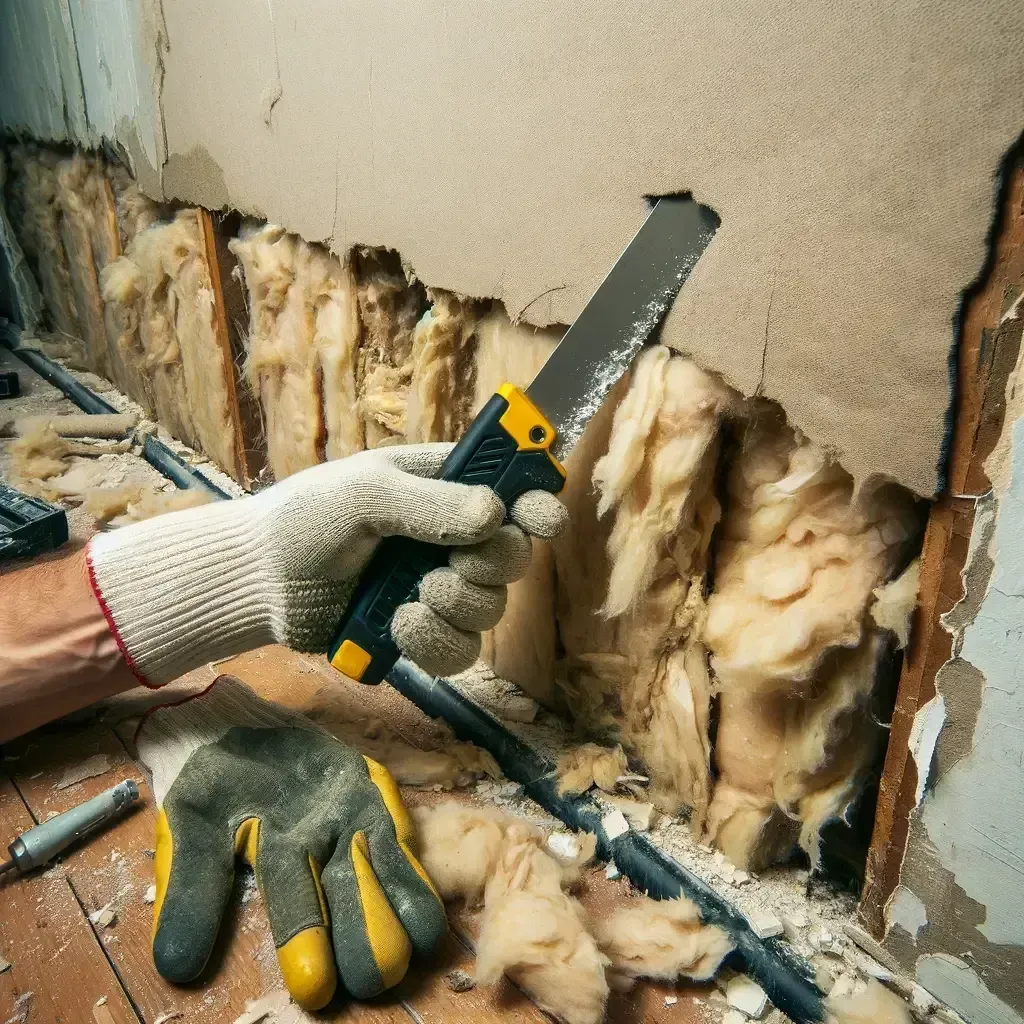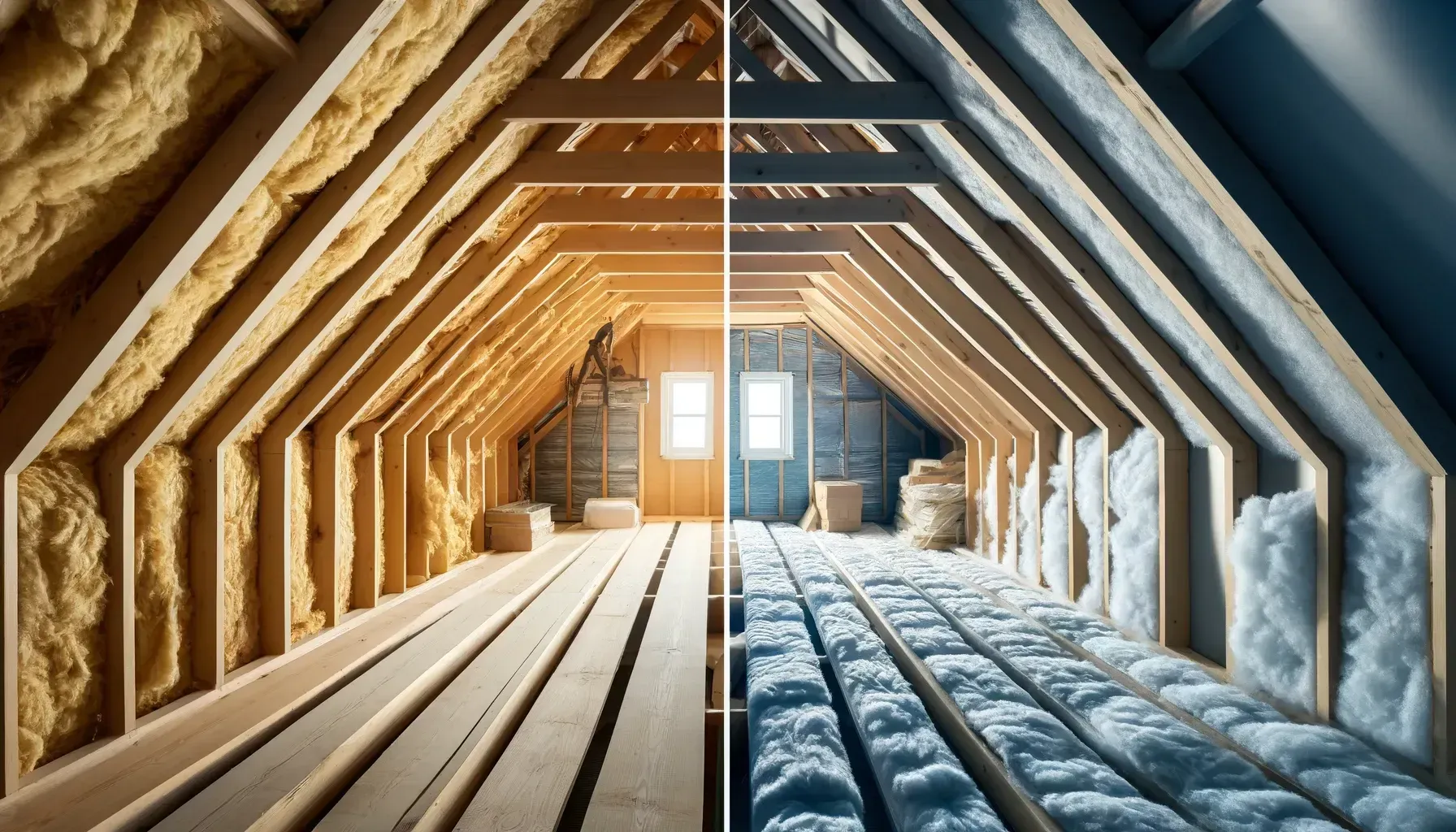Choosing the Best Insulation Contractor: A Comprehensive Guide
Deciding to remove old insulation material from your house can feel overwhelming, yet it's a critical step towards enhancing your living space's energy efficiency and comfort. The contrast between enduring a DIY nightmare and achieving a seamlessly executed project lies in the expertise of the insulation contractor you choose, including their knowledge of house material. This guide is tailored to navigate you through the process of hiring a proficient insulation contractor, ensuring your house's insulation material removal is handled efficiently, safely, and effectively. Let's dive into what makes a contractor stand out in house insulation services and how to ensure you're making the best choice for your home's insulation materials.
Key Takeaways
- Research is Essential: Before hiring an insulation contractor, understand the basics of insulation removal to make informed decisions.
- Preparation Pays Off: Get your home ready and clarify your expectations to streamline the contractor selection process.
- Choose Wisely: Look for contractors with a solid track record, relevant experience, and positive customer feedback to ensure the best fit for your project.
- Clear Communication is Key: Establish open lines of communication with your contractor to avoid misunderstandings and ensure your project's success.
- Quality Matters: Monitor the work being done to ensure it meets your standards and addresses your home's specific needs.
- Follow-up is Crucial: After the project's completion, assess the work done and address any concerns promptly for your satisfaction and peace of mind.
Understanding Insulation Removal
Identifying Needs
Before removing old insulation material, homeowners should assess its current state. Look for areas where the insulation seems compacted or has deteriorated. This step, involving insulation material, is crucial for maintaining a home's energy efficiency.
An attic inspection can reveal much about your insulation needs. It helps determine what type of new insulation will be most effective. For those looking ahead, consider how your climate control and energy-saving goals may influence your choice of insulation material.
Evaluating Home Performance
A professional energy audit is a smart move. It pinpoints exactly where your home loses heat or lets in cold air due to inadequate insulation. Experts often use thermal imaging to spot these issues in home insulation, offering a clear picture of where improvements in insulation material are needed.
Reviewing past energy bills can also offer clues. A sudden increase in costs might signal poor home insulation performance. These spikes are red flags that shouldn't be ignored.
Choosing Professional vs Handyman
The complexity of removing old insulation should not be underestimated. While a handyman might offer a lower rate, they may lack the specific skills required for this task, such as installing home insulation with the right insulation material. On the other hand, professionals specialize in insulation services. They ensure safety standards are met and often provide warranties on their work.
Cost is always a consideration. However, investing in a specialized contractor could save money long-term by ensuring the job is done right the first time.
Preparing for Contractor Selection
Home Evaluation First
Before hiring, ensure the contractor conducts a thorough home inspection, including insulation material. This step is crucial to assess the current state of your insulation. Share observations from your own attic examination. It helps them understand the scope better. Then, demand a detailed plan. This plan should cover both the removal and replacement of insulation. Such preparation ensures no surprises later on.
Seeking Recommendations
Start by asking people you trust for referrals. Neighbors, friends, and family can provide valuable insights based on their experiences. Also, leverage social media and local forums for feedback on contractors in your area. Another reliable source is local building associations. They can offer a list of reputable insulation contractors. These steps increase your chances of finding a top-notch service provider.
Verifying Credentials
It's essential to check the contractor’s licensing status. Do this either online or through local government offices. Also, ask for proof of insurance. This move protects you against potential job-related damages. Lastly, verify their certifications related to insulation work. These credentials ensure they have the right skills and knowledge for your project.
Selecting the Right Contractor
Gathering Estimates
To ensure you're getting a fair price on insulation material, obtain detailed quotes from at least three reputable contractors. These quotes should clearly break down the costs associated with labor, materials, and any additional fees that might apply. This step allows for an apples-to-apples comparison among potential service providers. Furthermore, don't hesitate to ask each insulation contractor about energy-efficient options that could lead to savings on your utility bills over time. Such inquiries not only show your interest in sustainable practices but also can impact the overall cost-effectiveness of the project.
Preferred Contractors
When narrowing down your choices, give preference to contractors who boast extensive experience with projects similar to yours, especially if it involves specialized areas like attics. Those offering a comprehensive range of services, including inspection, removal, and installation, should move to the top of your list. Consider those who back their work with extended warranties on both workmanship and materials. This level of assurance can provide significant peace of mind regarding the durability and quality of the insulation work.
Discuss Payment Terms
Before making a final decision, it's crucial to have a clear understanding of the payment terms. Discuss payment schedules upfront, including any required deposits and when final payments are due. Ask about available financing options or rebates for selecting energy-efficient upgrades which can further reduce long-term costs. Lastly, confirm that the contract is free from hidden costs or unexpected fees to avoid surprises once the work begins.
Effective Communication
Pre-Call Steps
Before reaching out to an insulation contractor, it's crucial to gather essential details about your home. Note any issues with your current insulation, especially if certain areas feel too hot or cold. This can affect the comfortable temperature in your home. Identify how to access your attic and other spaces needing work.
You should also know your home's age, the type of insulation installed, and its total square footage. These details help contractors understand the scope of work. Lastly, prepare questions about their methods for sealing leaks and adding new insulation.
Contractor Communication Tips
When you talk to potential contractors, share your goals for energy efficiency. Ask them how they'll improve heat retention or reduce heat loss in your home. This decision will impact your living environment for years.
Discuss the project's timeline and what you need to do before work starts. It's important to talk about how they handle dust, noise, and cleanup each day. These factors can greatly affect your daily life during the project.
Job Day Expectations
On the first day, confirm when the crew will arrive and how you'll identify them. This step ensures your safety and security.
Agree on precautions to prevent damage to your property. Make sure they cover floors or furniture as needed. Clear communication about updates throughout the project is vital. Set these expectations early on.
Ensuring Quality Work
Job Completion Checklist
After the insulation contractor has removed the old insulation from your home, it's crucial to ensure that the job was done correctly. Conduct a post-job walkthrough with the contractor. This allows you to inspect the work together. Look closely at the walls where the insulation was removed. Make sure no material is left behind.
Next, compare before and after photos. These pictures can visually confirm improvements made during the project. They show clear evidence of changes in your home's insulation.
Finally, schedule a follow-up energy audit. This measures performance enhancements after the removal and replacement of insulation. It checks if the work meets your energy-saving goals.
Ensuring Quality Work
To guarantee quality work, verify all agreed-upon tasks are complete. The contractor should leave your home clean, with no materials left behind. A thorough cleanup is as important as the removal itself.
Review all documentation provided by the contractor carefully. This includes details on the updated R-value of your new insulation and warranty information. The R-value measures how well insulation can resist heat flow. Higher values mean better performance.
The warranty is also key. It protects you against poor workmanship or material failures. Make sure you understand its terms and coverage.
Summary
Hiring the right insulation contractor to remove your home's insulation is crucial for your comfort, safety, and energy efficiency. You've learned how to understand the need for insulation removal, prepare for contractor selection, choose the right contractor, communicate effectively, and ensure quality work. These steps are your roadmap to a successful project. Remember, the key is to select a contractor who not only has the expertise but also values clear communication and delivers high-quality results. Your home is your sanctuary, and ensuring it receives the best care starts with making informed decisions.
Now's the time to take action. Use this guide to confidently navigate through the process of hiring an insulation contractor. By doing so, you'll ensure your home's insulation removal is handled professionally and efficiently. Don't wait; start reaching out to potential contractors today and take the first step toward a safer, more comfortable home.
Frequently Asked Questions
What should I know about local pros before hiring an insulation contractor for removal in attics as part of my home project to reduce energy costs?
Understand the type of insulation you have and its condition. Knowing whether it's spray foam, fiberglass, or another material helps in discussing removal methods with contractors.
How do I prepare for selecting a local pros insulation removal contractor for my home project, focusing on attics to reduce energy costs?
Research potential contractors’ credentials, reviews, and previous work. Prepare a list of questions regarding their experience, insurance, and project timeline.
How do I choose the right insulation removal contractor?
Select a contractor with specific experience in insulation removal, valid licensing, and insurance. Look for positive customer feedback and transparent pricing.
What is the importance of effective communication with my contractor on the home project job, especially regarding home insulation with local pros?
Clear communication ensures your project requirements are understood and met. It also helps in addressing any concerns promptly throughout the project.
How can I ensure quality work from my insulation removal contractor, a local pro, for my home project to guarantee a professional job?
Request a written agreement detailing the scope of work, materials used, timeline, and warranty information. Conduct a final inspection with the contractor to ensure all agreed-upon work meets your standards.
Is it necessary for a reputable contractor or local pros to help remove old insulation before installing new for a home project?
Yes, removing old insulation can eliminate potential health hazards and improve the efficiency of new insulation by ensuring proper installation without gaps or overlaps.
Can I remove insulation myself for my home project or should I hire a reputable contractor, possibly local pros, for my house?
While some types of insulation can be removed by homeowners, hiring a professional is recommended for safety reasons and to ensure proper disposal of old materials.


